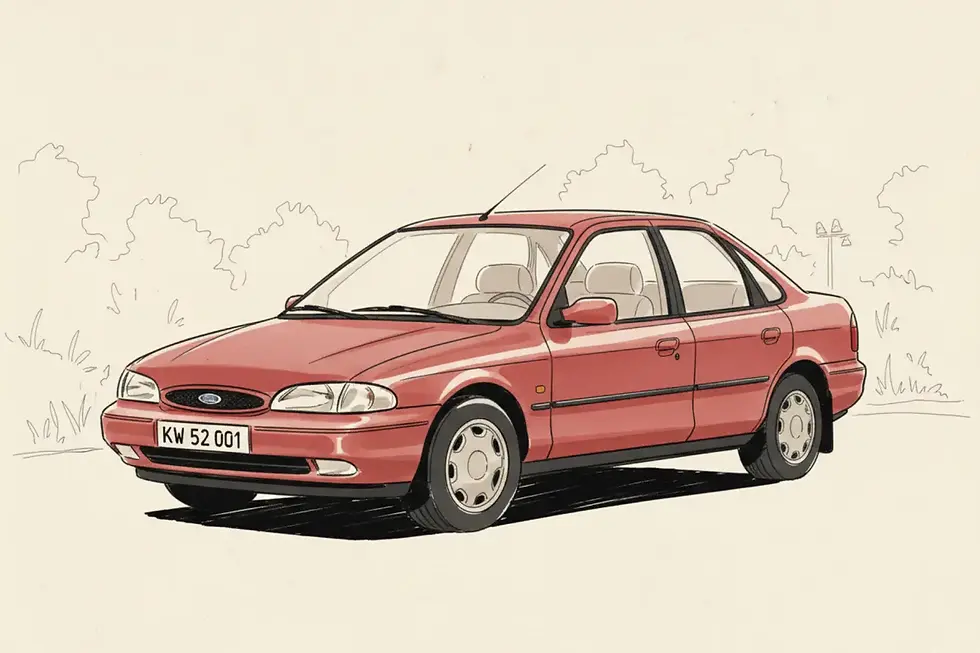Ford Duratec

Ford Duratec /ford dyoo-ruh-tek/ proper noun
The Duratec is the brand name for a large and diverse family of four-cylinder, V6, and V8 petrol engines produced by the Ford Motor Company from the 1990s onwards. While the name was slapped on everything from a Ka to a Transit, it is the all-aluminium, four-cylinder version that became the heart and soul of the modern British specialist sports car industry. It is the spiritual successor to the legendary Ford Kent and Pinto engines, a humble, mass-produced saloon car engine that, in the hands of British tuning wizards, could be transformed into a screaming, high-revving racing thoroughbred. For companies like Caterham and Morgan, the Duratec was a gift: light, reliable, tuneable, and blessedly free of any complicated turbochargers.
The Full Story of the Ford Duratec
The name "Duratec" is a masterpiece of marketing confusion, a single badge applied to a bewildering array of different engines. There was a V6 which, in a magnificent piece of engineering alchemy, was effectively fused together in pairs by Ford and Cosworth to create the glorious 6.0-litre V12 that would power Aston Martin for nearly two decades. There were various other units, but the one that truly matters, the engine that powered a generation of British sports cars, was the Duratec HE. It was a modern, all-aluminium, twin-cam, 16-valve four-cylinder, co-developed with Mazda and first seen powering the Ford Mondeo from the early 2000s.
For Britain's small-scale sports car makers, this engine was the answer to their prayers. For decades they had relied on Ford's old iron-block engines, and more recently, the brilliant but fragile Rover K-Series. The Duratec arrived as the perfect replacement. Being all-aluminium, it was incredibly light, a vital characteristic for a car built to the "add lightness" philosophy. It was also robust; an engine designed to endure 150,000 miles of neglect in a sales representative's Mondeo was more than tough enough for a weekend toy.
The magic, however, was in its tuning potential. In standard form, it was a perfectly adequate but deeply uninspiring powerplant. But in the workshops of British tuning legends like Cosworth, it was a block of raw potential. With a new set of camshafts, a better exhaust, and a pair of Weber carburettors or individual throttle bodies, the humble Duratec could be woken up. In its ultimate forms, it could rev to over 8,000 rpm and produce more than double its original horsepower, all without a turbocharger in sight.
It quickly became the default engine for the cars that defined analogue driving. Caterham adopted it as the heart of the Seven, from the basic road-going models to the terrifyingly fast 620R. Morgan placed it in their traditional Plus 4, giving the classic roadster a reliable and powerful modern engine. An entire ecosystem of smaller manufacturers like Ginetta, Westfield, and Radical built their track day specials and club racers around it. The Ford Duratec, the workhorse of the Mondeo, had been given a glorious second life as the hero of the British sports car.
For The Record
Was the Duratec a Ford design?
The most famous four-cylinder version was a joint effort between Ford and Mazda, where it was known as the MZR engine. This collaboration between a global giant and a respected Japanese engineering firm is a key reason why it was such a well-designed and reliable unit.
Is it true the Aston Martin V12 is just two V6s put together?
In essence, yes. The famous 6.0-litre Aston Martin V12 engine that powered the DB7 and Vanquish was developed by Ford and Cosworth by effectively joining the crankshafts and architecture of two 3.0-litre Duratec V6 engines. While it was a highly sophisticated piece of engineering in its own right, its humble origins are a legendary piece of automotive trivia.
Is the Ford EcoBoost engine a Duratec?
Essentially, yes. The modern turbocharged EcoBoost four-cylinder engines are direct descendants of the Duratec HE, sharing the same basic block and architecture but with the significant additions of turbocharging and direct fuel injection.
What makes an engine "tuneable"?
It refers to an engine's ability to be modified to produce significantly more power than standard. The Duratec had a strong block, a well-designed cylinder head that allowed air to flow easily, and a robust bottom end. This strong foundation meant it could handle the stresses of higher revs and other modifications without immediately breaking.
Why did specialist car makers prefer the four-cylinder Duratec?
For its simplicity and character. The Duratec was naturally aspirated, meaning no complex turbochargers or intercoolers were needed. This made it lighter, easier to install, and gave it the sharp, instant throttle response and linear power delivery beloved by driving purists.
